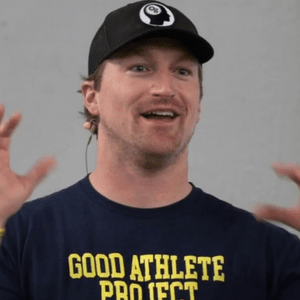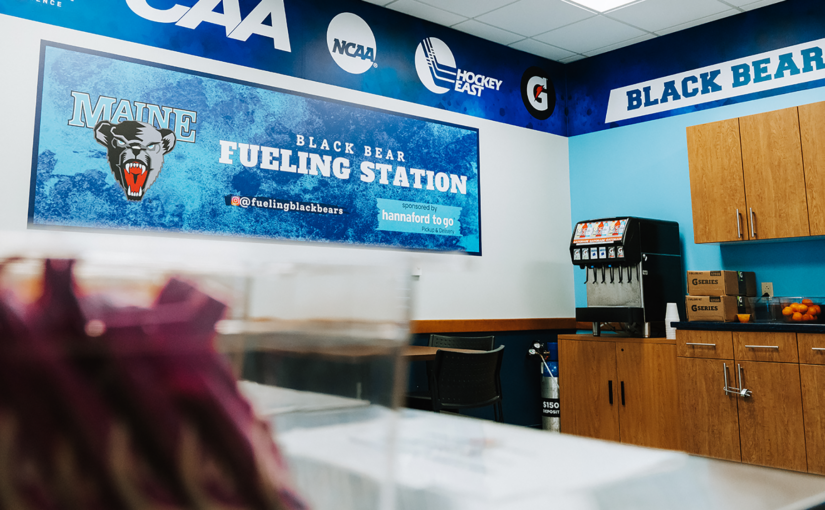Social-Emotional Learning Through Strength & Conditioning
Sports teach life lessons. At least that’s what we have been told.
In my time as an athlete and coach, I have yet to see a football, a basketball, or a barbell teach a young person about character. However, I have seen countless coaches use their sport as a classroom, creating cultures and teaching lessons that empower young people for life. That is an important distinction: Athletics don’t teach life lessons, coaches do. Athletics do, however, offer a powerful platform for those lessons.
 Within that platform, strength and conditioning holds a special —and often underutilized — position. For every three-month season, there is a nine-month offseason filled with motivation, surrounded by teammates, and led by thoughtful coaches. When this is done well, athletes receive the benefit of injury prevention, performance enhancement, and essential education.
Within that platform, strength and conditioning holds a special —and often underutilized — position. For every three-month season, there is a nine-month offseason filled with motivation, surrounded by teammates, and led by thoughtful coaches. When this is done well, athletes receive the benefit of injury prevention, performance enhancement, and essential education.
The value of strength and conditioning is clear. More schools are hiring strength coaches every year. The field of strength and conditioning, especially at the high school level, is where film study was about 20 years ago. Everyone sees the benefit, many are trying it, but there is a ton of room for growth. Before too long, it will be unheard of for an athletic department not to have a full-time strength coach with a part-time staff to train student-athletes.
Within this growing community, we support those who have committed themselves to go beyond strength to teach lessons that last a lifetime. The best strength coaches in the business focus on culture, on community, on educating young people through powerful metaphors of strength. Championships can be a nice benefit of this approach, but they cannot be the sole focus.
What’s Important Now?
To remind ourselves of what is important, we adhere to a hierarchy. We teach 1) Safety 2) Community 3) Character 4) Leadership and 5) Performance – in that order. It is never appropriate to recklessly jeopardize an athlete’s safety in pursuit of a championship, and a championship won with a low-character team is hollow and fleeting. We stick to the script. It works.
Over the course of many offseasons at New Trier (IL) High School, we have had the privilege of working with more than 35 state and national championship teams, from soccer to lacrosse to rowing. Kind people regularly ask me to speak and consult on the topic of performance, and through my work at the Good Athlete Project, a nonprofit organization, my team and I have been able to share these ideas with under-supported communities all over the world. It has been a fun and meaningful journey, but the work has just begun.
Aligning with Schools
Teams associated with schools are educational spaces. Regardless of what is perceived to be at stake, a high school coach and an NBA coach should be held to different standards. Aligning with the values of a host institution is good for the athletes as well as building a school-wide appreciation for the work done in the weight room.
 In our work, we have identified an incredible opportunity in the “Character” stage. Here, strength coaches have the opportunity to align with the school’s vision to promote social-emotional learning (SEL).
In our work, we have identified an incredible opportunity in the “Character” stage. Here, strength coaches have the opportunity to align with the school’s vision to promote social-emotional learning (SEL).
Though the possibilities are endless, the three big lessons we teach in the weight room are essential social-emotional learning capacities backed by stacks of research: grit, growth, and gratitude. We start with gratitude and routinely practice an appreciation for our shared opportunity, our health, and each other. We teach powerful growth mindset techniques that reimagine every challenge as a learning opportunity. And we support the passion and perseverance it takes to push oneself down the final leg of any journey – that final stretch is often the difference between a good season and a great one.
The best part about teaching for grit, growth, and gratitude is that all three capacities have meaningful impacts on a student’s life outside of athletics. These are life lessons built not in spite of performance enhancement, but alongside it. It is good for all, if we as coaches are intentional about our methods.
» ALSO SEE: Cultivating Confidence in Student-Athletes
A few quick questions to reflect on as a coach:
- Do you have a clear purpose that is routinely shared with your athletes?
- Do you model the values you want to see from your athletes?
- Do you regularly create opportunities to teach lessons that go beyond strength and empower a young person for a lifetime?
Supporting coaches is what we do. If you are interested in learning how to create a strength program that enhances the athletic department, the school, and the lives of all involved, please reach out. We look forward to working with you.
For more, find us at GoodAthleteProject.com, or reach out directly at [email protected].





